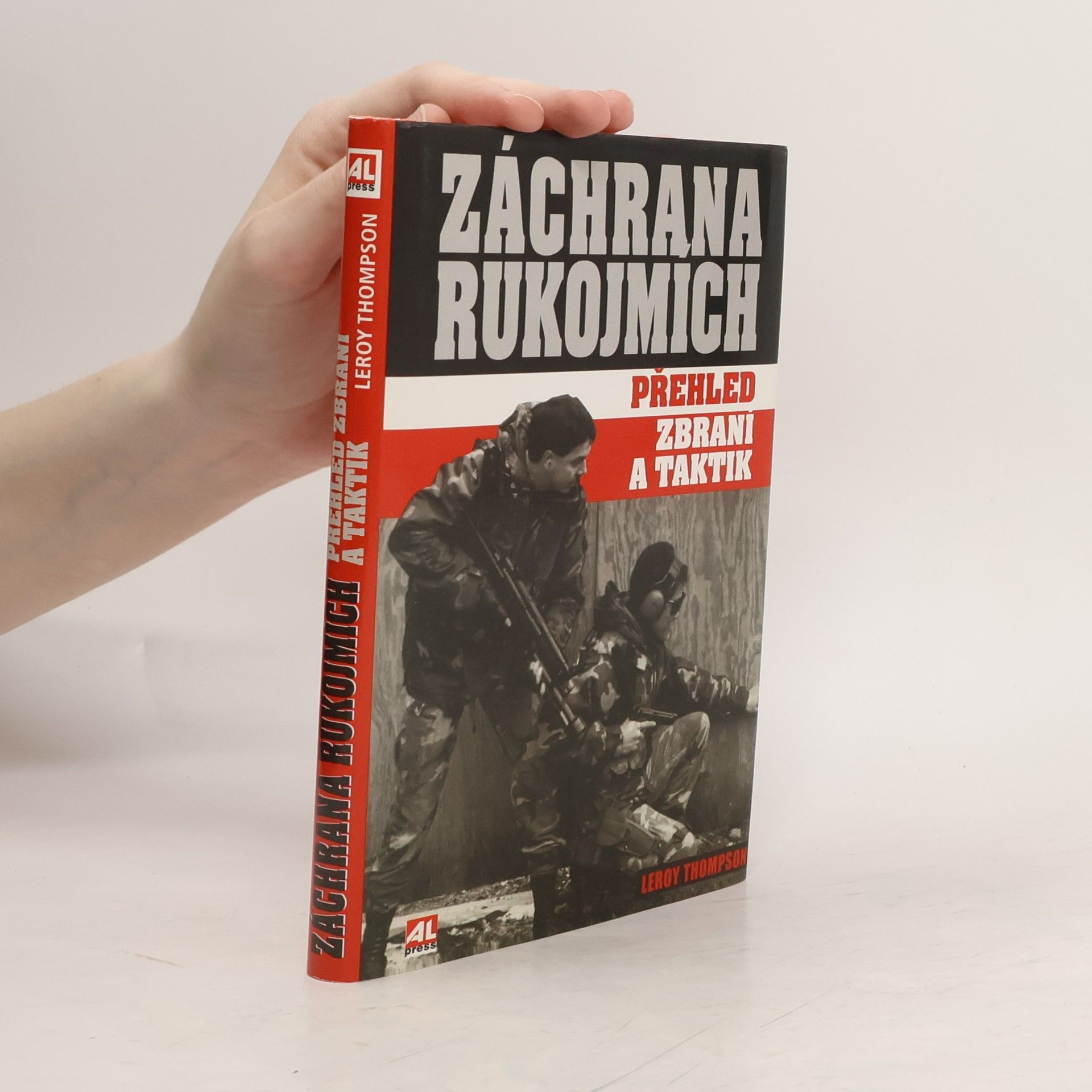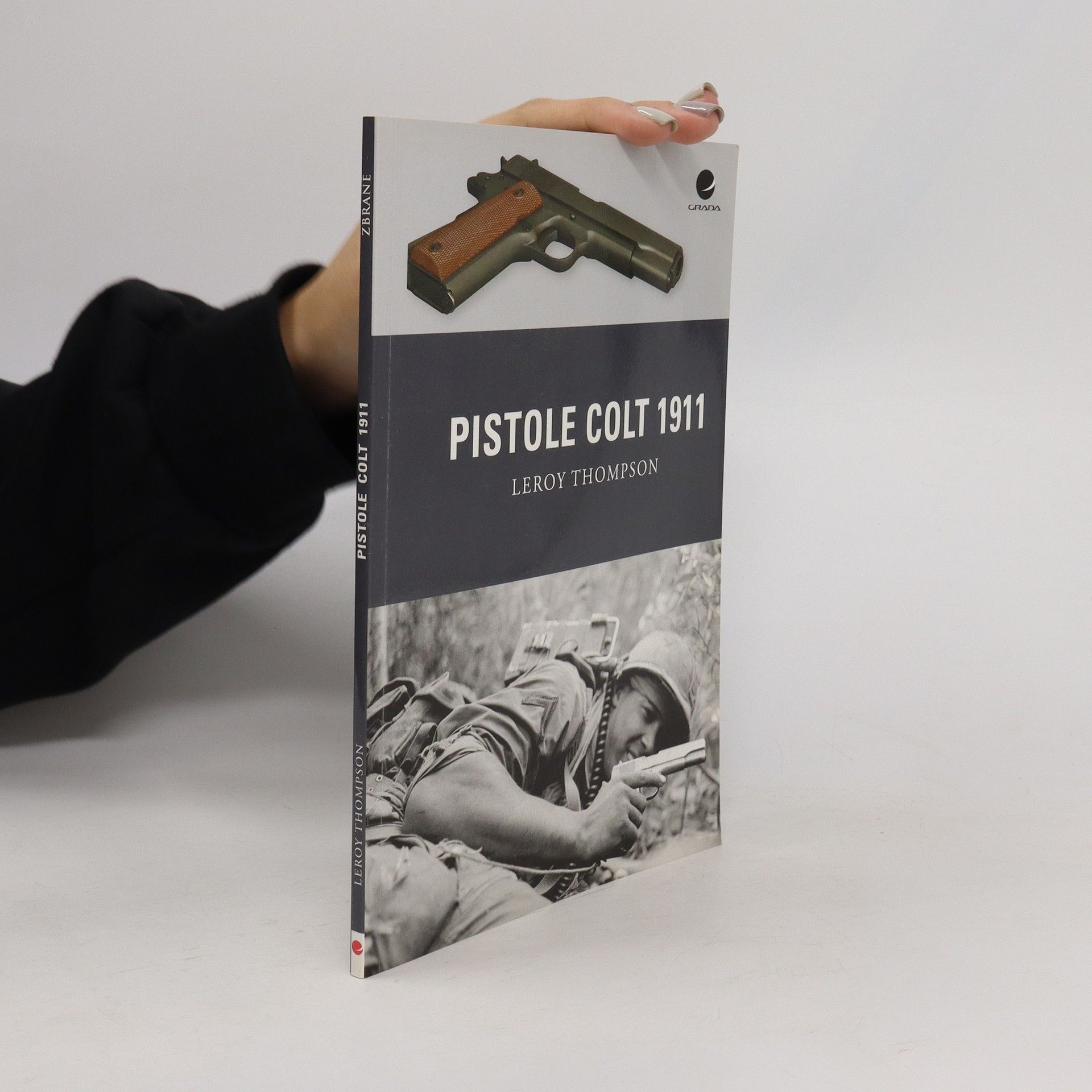Manuál bodyguarda. Profesionální techniky ochrany osob
- 358 stránok
- 13 hodin čítania
Publikace seznamuje s principy práce profesionálních ochránců významných osobností.
Leroy Thompson čerpá zo svojich rozsiahlych skúseností s výcvikom špeciálnych jednotiek a taktickým používaním zbraní po celom svete. Jeho písanie sa vyznačuje autenticitou a hlbokým porozumením pre komplexnosť vojenských a policajných operácií. Thompsonova práca vyniká v poskytovaní podrobných a realistických pohľadov na svet akcie a stratégie. Jeho schopnosť preniesť svoje praktické znalosti na papier z neho robí jedinečného rozprávača.







Publikace seznamuje s principy práce profesionálních ochránců významných osobností.
Kniha mapuje slavnou stoletou historii Coltu, popisuje jeho design a překvapivě mnohostranné užití v boji, nejnovější technické inovace a také vliv, jaký měla pistole 1911 na dějiny palných zbraní. Do výzbroje US ARMY se dostala roku 1911 a s jedinou výraznou modernizací v roce 1924 sloužila jako standardní krátká palná zbraň až do roku 1985, kdy ji nahradila Beretta 92 F (M9) ráže 9 mm Luger. Některé speciální armádní jednotky ji ale používají dodnes a po zkušenostech z Iráku a Afghánistánu se objevily názory, že by měla být 1911 do výzbroje amerických ozbrojených sil zavedena znovu. Dočkala se mnoha variant určených pro civilní trh, vyvážela se do řady zemí a je stále nejkopírovanější pistolí na světě. Byla nasazena ve čtyřech velkých válkách, stříleli z ní nejen váleční hrdinové, ale také mnozí slavní ochránci zákona včetně agentů FBI a na druhé straně proslulí gangstři, například Bonnie a Clyde.
Příručka přibližuje základní metodiku výcviku a boje speciálních jednotek s povstaleckými skupinami.
Kniha seznamuje čtenáře se stručnou historií bojových brokovnic, s jejich vlastnostmi, využitím, výbavou, příslušenstvím a střelivem. V podstatě jde o encyklopedii bojových brokovnic, která přináší o každé zbrani základní informace, včetně dostupných technických dat. Textová část je doplněna bohatou obrazovou přílohou, aby si čtenář mohl udělat obrázek o tom, jak která zbraň vyhlíží a čím je zajímavá.
Since its introduction in the 1950s the innovative G3 battle rifle has seen widespread combat around the globe, from South America to Afghanistan. This absorbing study investigates the origins, development, combat record, and legacy of this iconic rifle of the Cold War.During the Cold War, the G3 was one of the world's pre-eminent battle rifles. Developed in France and Spain after 1945, the rifle was produced by the German arms manufacturer Heckler & Koch. Adopted by more than 40 countries and produced on licence by many more, it was widely employed during colonial wars in Africa, insurgencies in Latin America, and conflicts in the Middle East, but perhaps its widest use was in the Iran–Iraq War. Variants of the G3 have also seen substantial usage among Special Forces including Britain's Special Boat Service and the US Navy SEALs. Semi-automatic versions, especially the HK91 and HK93, remain popular in the United States, and the G3-derived HK11 and HK21 family of light machine guns have also been widely adopted by military and law-enforcement units across the world. Fully illustrated with specially commissioned artwork, this study examines one of the iconic weapons of the Cold War era.
The dagger was first used during early Commando raids into occupied Europe but saw action in every theatre of World War II. US Rangers and Marines who had trained with the Commandos took their Fairbairn-Sykes daggers home which also influenced the development of American Special Forces daggers.
In Korea and Vietnam, reconnaissance troops and special-operations forces were at times armed with the M3A1 also available in a suppressed version - and it was the first SMG issued to the US counter terrorist unit Delta Force. Featuring artwork, first-hand accounts and archive and close-up photographs, this is the story of the M3 sub machine gun.
The book delves into the operations of counter-terrorist units, shedding light on their selection, training, and organizational structures. It explores the principles that govern these units and examines fundamental theories of warfare, providing a comprehensive understanding of their critical role in modern security.
In turbulent Shanghai in the years between the world wars, the International Settlement was a mercantile powerhouse that faced unrest. Adjoining the Settlement were the French Concession and the Chinese city, both hotbeds of intrigue and crime themselves. The Settlement relied on its police: the Shanghai Municipal Police.